Embarking on a musical journey from the comfort of your own home is now easier than ever. At LEARNS.EDU.VN, we understand your desire to learn guitar at home, and we’re here to provide a comprehensive guide filled with tips, resources, and structured approaches. By following our expert advice, you’ll be strumming your favorite tunes in no time, mastering this instrument and unlocking your musical potential.
1. Discovering the Versatility of Guitar Music
The guitar is an incredibly versatile instrument, capable of playing a wide range of musical genres. Whether you’re into blues, jazz, rock, classical, or even Bollywood, the guitar seamlessly adapts to each style.
- Exploring Various Genres: Exposing yourself to different genres is essential. This will help you develop a solid, all-around foundation on the guitar, allowing you to appreciate and play various musical styles effectively.
2. Choosing the Right Guitar Type
Selecting the right type of guitar is a crucial first step for any aspiring guitarist. There are several types of guitars available, each with its unique sound and playing style.
2.1. Acoustic Guitar
Acoustic guitars are versatile and widely used. They produce sound naturally through the vibration of the strings and the resonance of the wooden body.
2.2. Classical Guitar
Classical guitars typically use nylon strings, which produce a softer, warmer tone ideal for classical and folk music.
2.3. Electric Guitar
Electric guitars require an amplifier to produce sound. They are popular in rock, blues, and metal genres, offering a wide range of tones and effects.
2.4. Bass Guitar
Bass guitars typically have four strings and play lower notes, providing the rhythmic and harmonic foundation in many musical genres.
- String Material: Acoustic and electric guitars use steel strings that are brass or bronze-plated, while classical guitars use nylon strings.
- Bass Guitar Tuning: Bass guitars are usually 4-stringed instruments tuned similarly to the 4 lowest pitched strings of the acoustic guitar – E, A, D, and G, but they are an octave lower in pitch.
For beginners, an acoustic guitar is often recommended due to its simplicity and versatility.
3. Understanding the Parts of an Acoustic Guitar
Familiarizing yourself with the different parts of the guitar is crucial for effective learning and communication.
- Headstock: Located at the top of the guitar, it holds the tuning pegs.
- Tuning Pegs: Used to adjust the tension of the strings, thereby tuning the guitar.
- Nut: A small piece of hard material that the strings pass over after the headstock, helping to set the string height and spacing.
- Neck: The long, wooden part of the guitar where the frets are located.
- Fretboard: The surface of the neck where the frets are embedded.
- Frets: Metal bars that divide the fretboard into specific notes.
- Soundhole: The opening in the body of the guitar that allows the sound to resonate.
- Bridge: The part of the guitar that holds the strings in place on the body.
- Saddle: Located on the bridge, it supports the strings and helps to transmit their vibrations to the body of the guitar.
- Body: The main part of the guitar that amplifies the sound produced by the strings.
4. Mastering the Strings of the Guitar
Understanding the strings is essential for playing melodies and chords.
- String Arrangement: There are six strings on a guitar of varying thickness. The open strings are E (lower octave), A, D, G, B, and E (higher octave) from thickest to thinnest.
- String Numbering: When you hold the guitar to play, the thinnest string (higher octave E) is at the bottom and is called the first string. By extension, the lower octave E is the sixth string.
To help you remember the string order, you can use mnemonics like:
- Elephants And Donkeys Grow Big Ears
- Eddie Ate Dynamite Good Bye Eddie
5. Selecting the Right Guitar Size
Choosing the correct guitar size is important for comfort and playability, especially for younger learners.
| Age (years)* | Scale length of guitar in inches (cm)** | Total length of guitar in inches (cm)* |
|---|---|---|
| 7-8 | 19 (48) | 31 (78.7) |
| 9-10 | 23 (58) | 34 (86) |
| 11-12 | 23 (58.4) | 36 (91) |
| Above 12 | 25.6 (65) | 41 (104) |
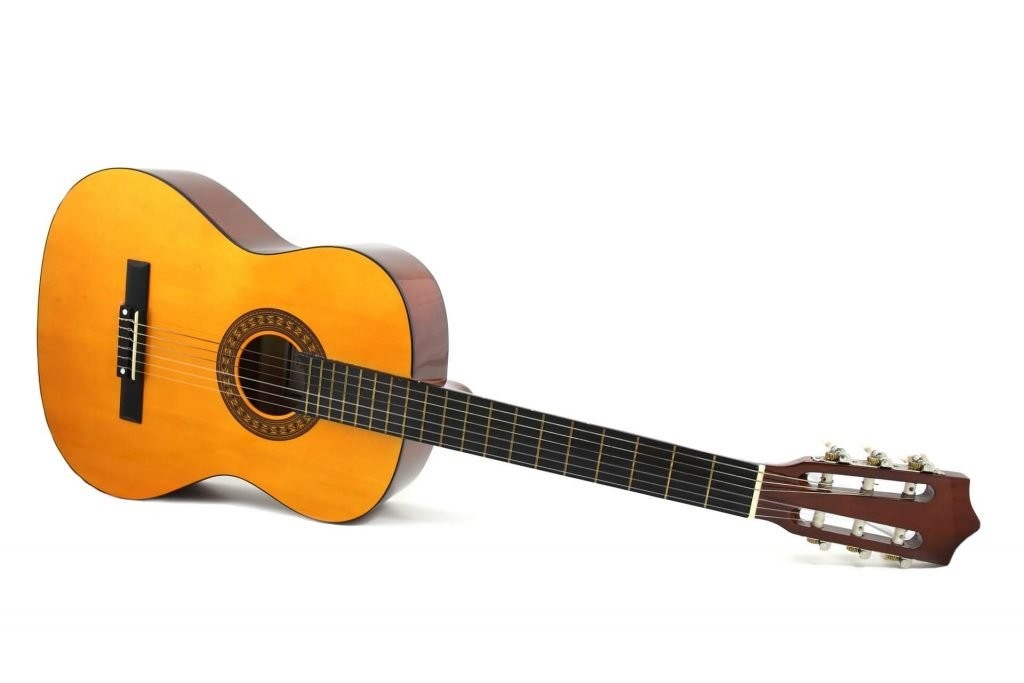
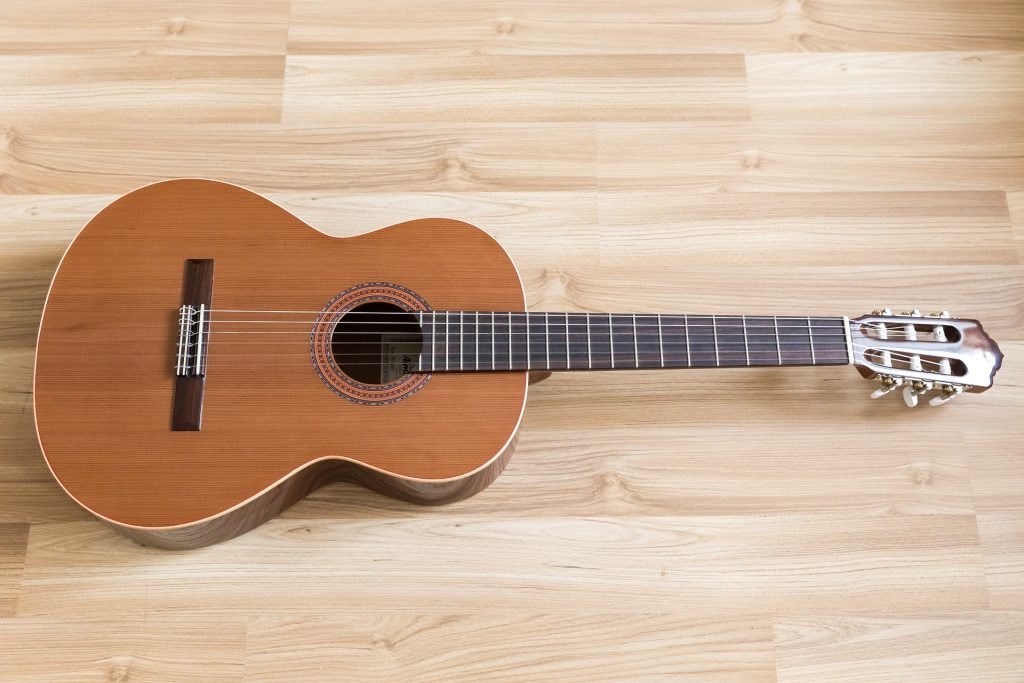
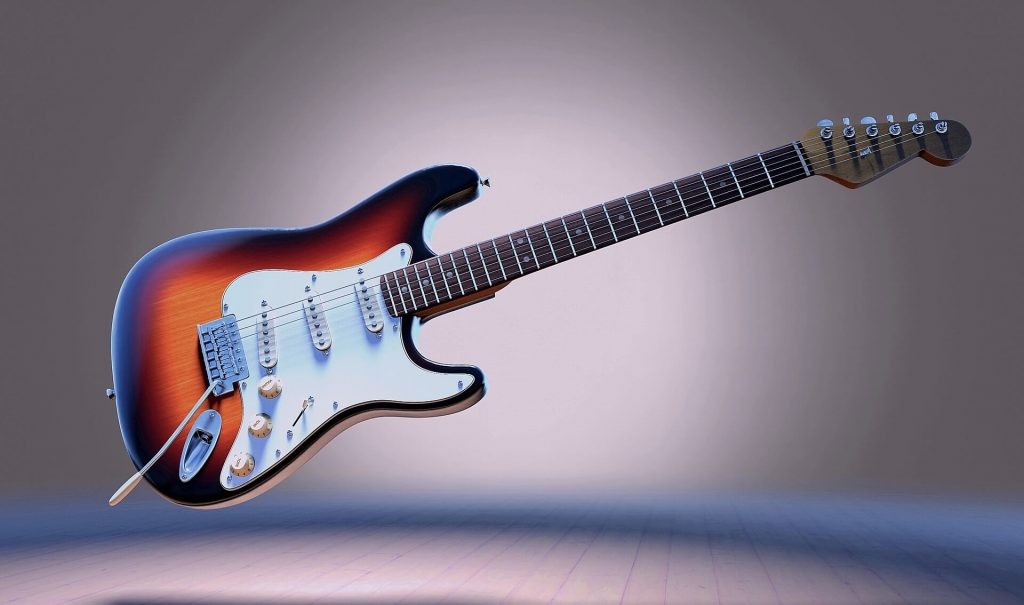
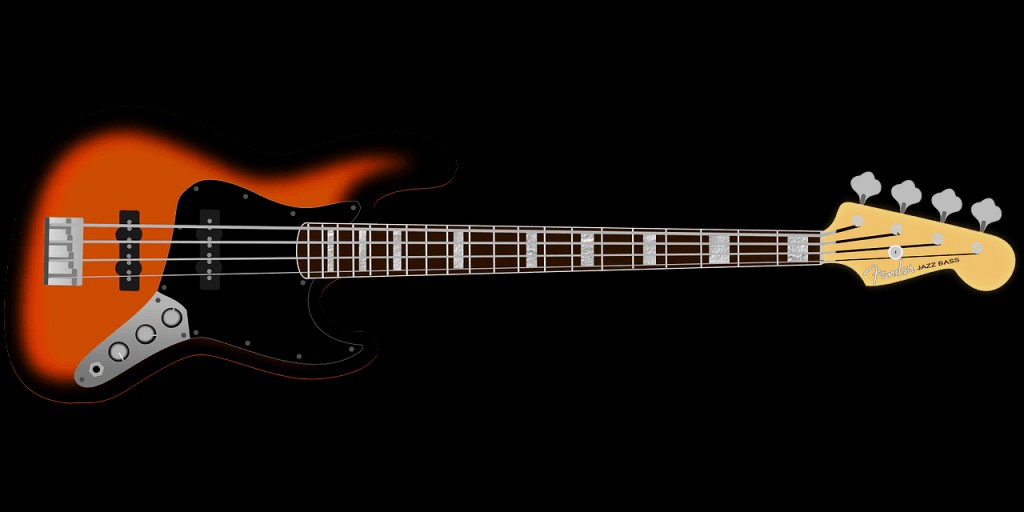
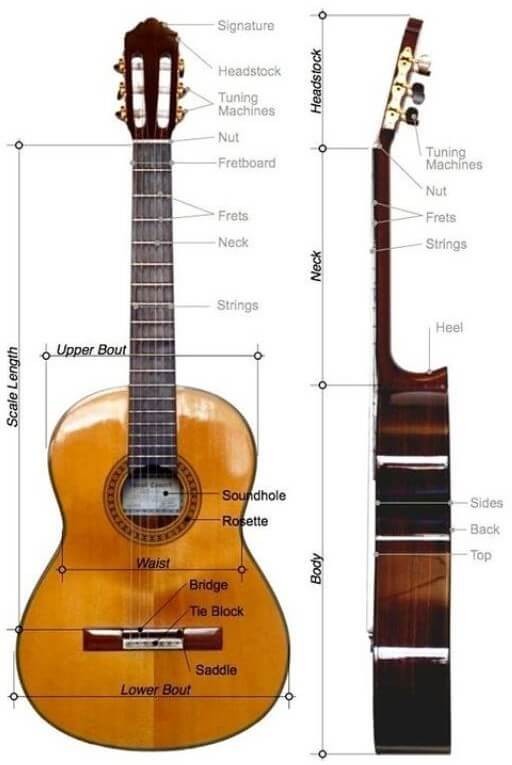
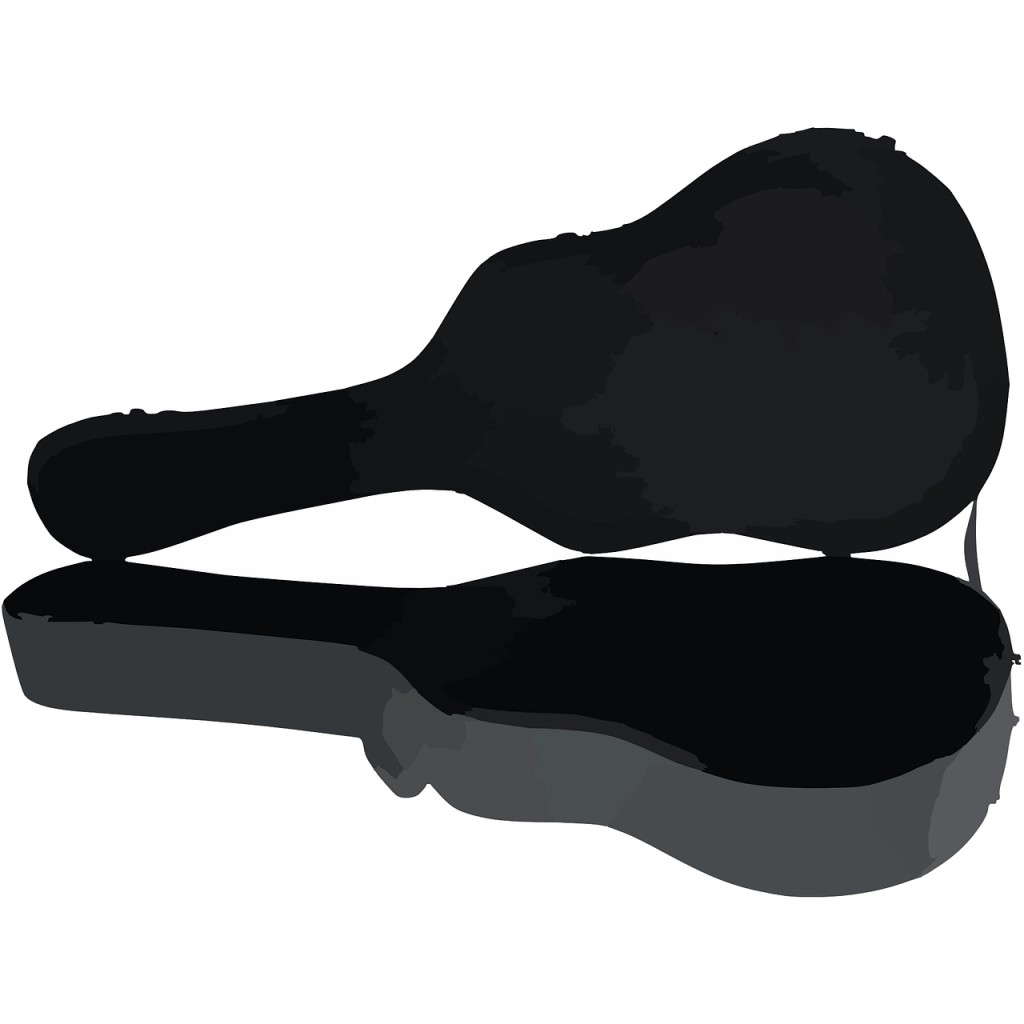
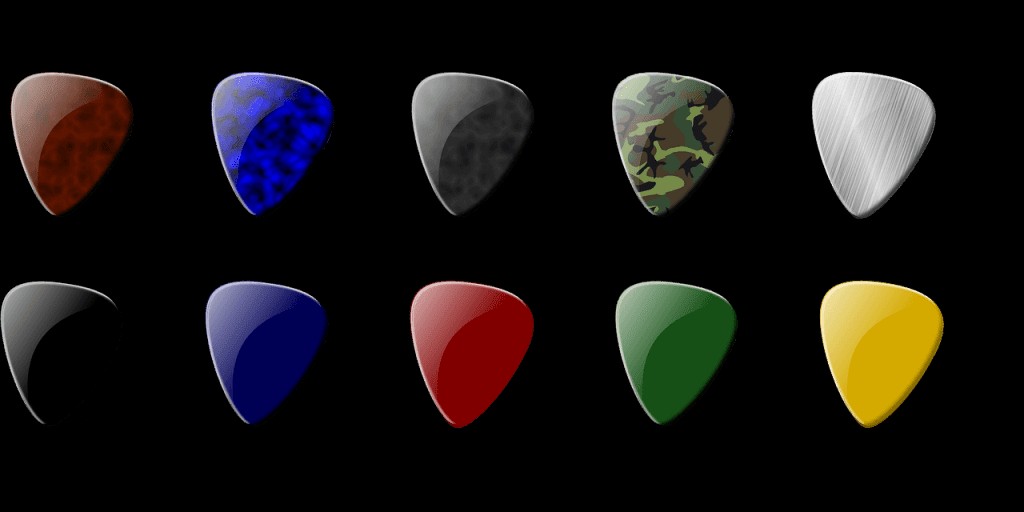
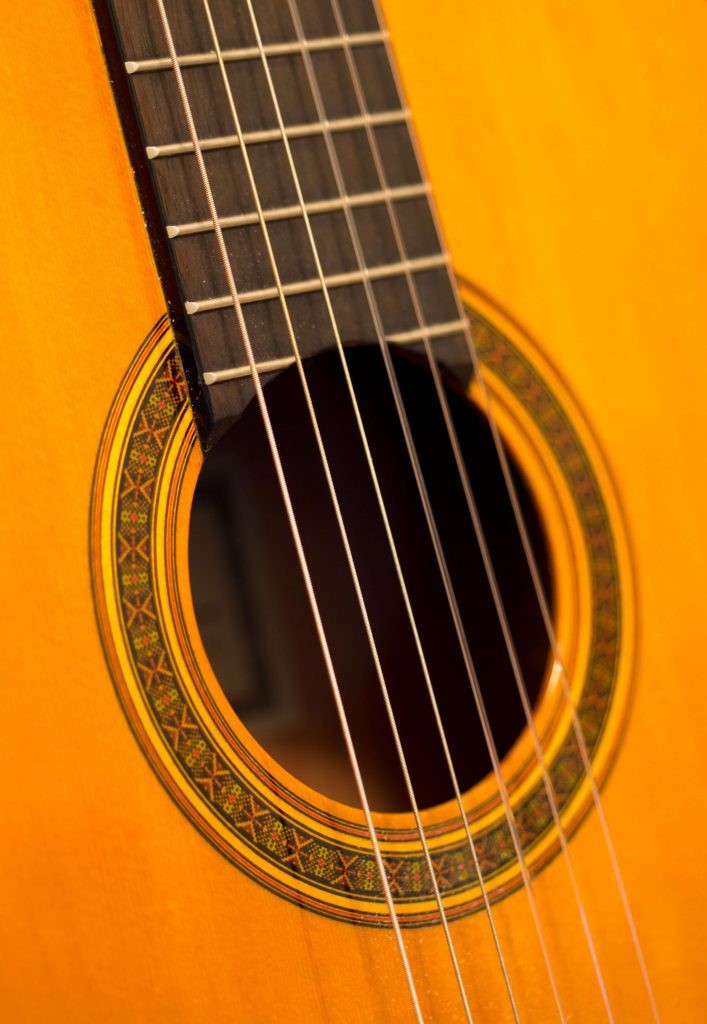
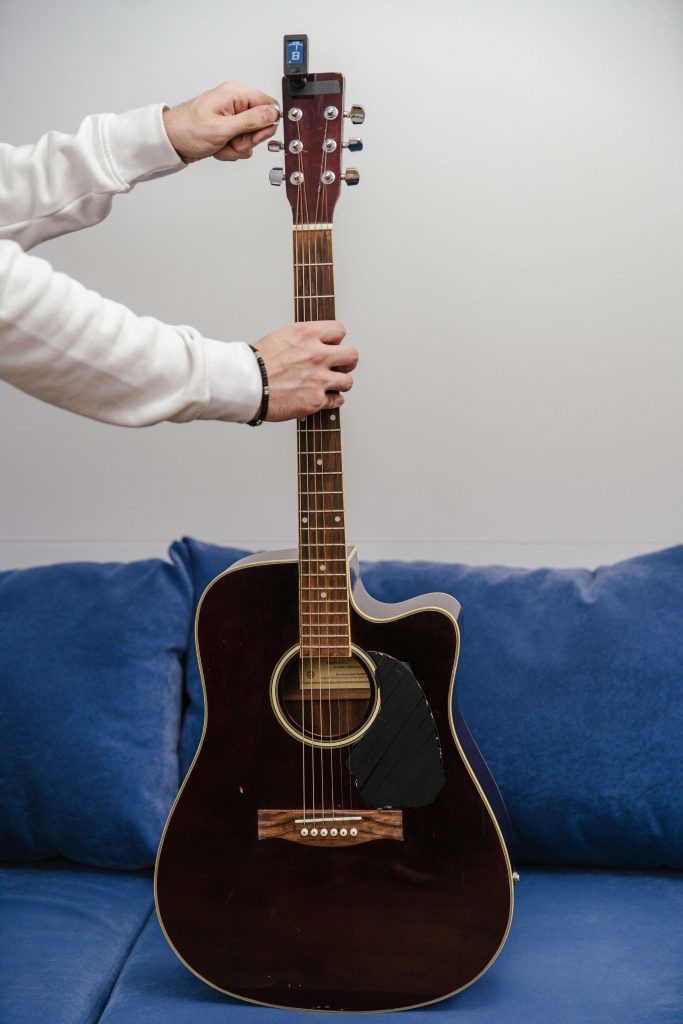

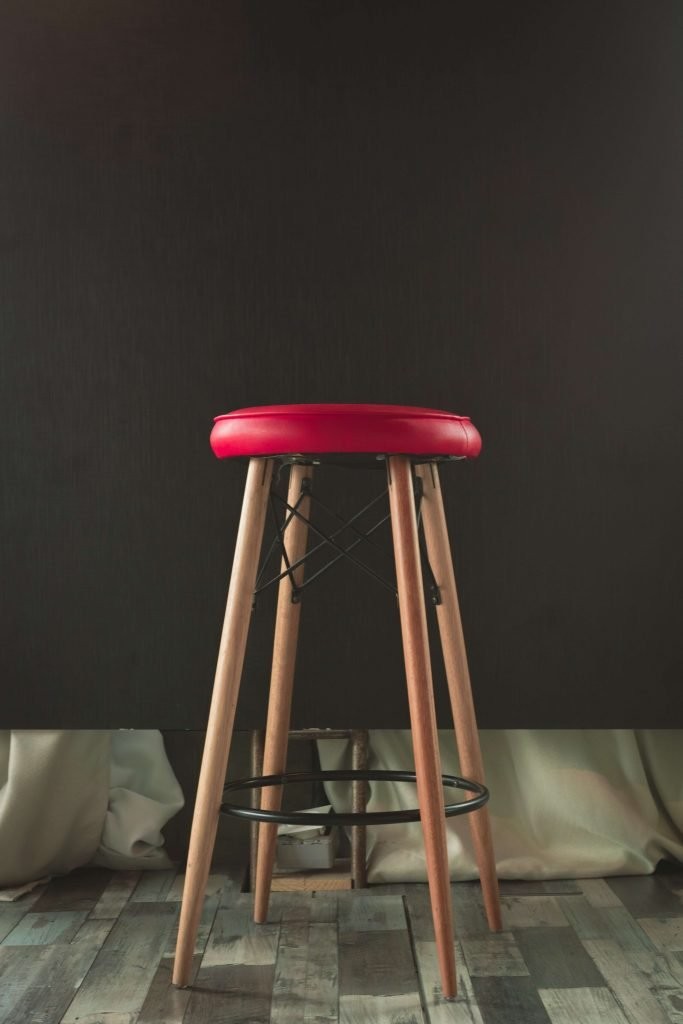
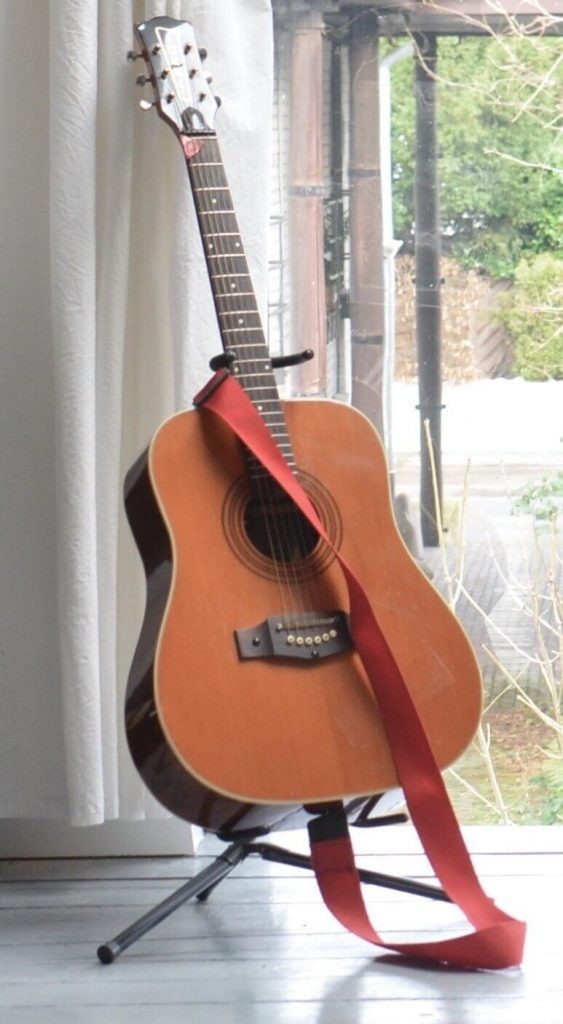
- Note: The right size will depend on the height of the individual. If the person’s height is different from the average height of that age category, consider a category lower or higher as the case may be.
- Scale Length: Scale length means the length of the guitar from the bridge to the nut. These are approximate measurements as the length of the guitar will vary from maker to maker.
6. Essential Equipment for Learning Acoustic Guitar
Having the right equipment can significantly enhance your learning experience.
6.1. Case
A case, either hard or soft, protects your guitar from scratches and nicks, making it easier to carry around.
6.2. Pick
A pick (or plectrum) is a triangular tool used to pluck the strings, increasing the sound and helping you play songs faster.
6.3. Strings
It’s always a good idea to keep an extra set of strings in case one breaks.
6.4. Tuner
A tuner helps you get the right sounds by tuning your guitar correctly, especially useful for beginners.
6.5. Strap
A strap enables you to hold the guitar without dropping it, particularly when standing.
6.6. Stool
As a beginner, sitting posture is important. Use a chair or stool without arms or a backrest.
6.7. Stand
A stand provides a safe place for your guitar. Alternatively, you can hang it on the wall.
7. The Benefits of Online Guitar Lessons
Online guitar lessons offer numerous advantages, especially in today’s digital age. According to a study by the National Association for Music Education, students who take online music classes show improved cognitive skills and academic performance.
- Convenience: Learn from the comfort and safety of your home.
- Flexibility: Access lessons at your own pace and schedule.
- Expert Instruction: Receive guidance from experienced educators.
With LEARNS.EDU.VN, you can access live online guitar courses that provide personalized instruction and real-time feedback.
8. Setting Up Your Home Learning Environment
To make the most of your online guitar lessons, ensure you have:
- Reliable Device: A laptop, desktop, or tablet with a good internet connection.
- Quiet Space: A quiet environment to focus on your lessons.
- Essential Equipment: All the necessary guitar equipment as suggested by your educator.
Your educator will guide you through the basics of guitar theory and practice, showing you how to play and correcting your fingering and strumming movements. Small or one-on-one classes are ideal for this purpose.
9. Essential Basics for Beginners Learning Acoustic Guitar
Navigating the technical jargon can be daunting for beginners. Let’s clarify some essential terms to make you feel more guitar literate.
9.1. Familiarizing Yourself with the Fretboard
Frets are located on the neck of the guitar, perpendicular to the strings. There are typically 22 frets on a guitar.
- Fingering: Your left hand (if you’re right-handed) will need to get acquainted with the fretboard when fingering. This is where you press or ‘stop’ the strings to play different notes.
- Fret Numbering: Starting from the headstock of the guitar, you have 0 (zero) fret or the open string.
9.2. Understanding Guitar Tablature
Beginners should learn how to read guitar tabs or tablature. This is a musical notation that tells you what string to play and what frets to finger – similar to the musical notations staff which tells you what notes to play.
- Tab Numbers: The number on a tab represents the fret that you should play on.
- Vertical Alignment: If the numbers are in the same vertical line, they have to be played together.
- String Representation: The highest line in a tab is the high E while the lowest line is the low E.
9.3. Reading Western Music Notation
As a beginner, reading Western notation can appear daunting. However, once you use a few simple tricks, you might be surprised with how musically literate you feel.
- Staff Lines: If the notes are on the lines (called staff lines), they are E, G, B, D, and F from the lowermost line to the topmost line. A good way to remember is with this sentence – Every Good Boy Does Fine.
- Spaces: If the notes are in the space, they are F, A, C, and E from the lowest space to the topmost space between the lines. Read it as FACE, or Face is in the Space.
9.4. Understanding Treble Clef (𝄞)
This tells you what pitch the instrument should be played in. You will find it at the beginning of the notes of the music.
Image of a treble clef, indicating the pitch of the music.
9.5. Key Signature
This tells you the notes that have to be played sharp (#), flat (♭), or natural (𝄮). It is mentioned immediately after the treble clef. If nothing is mentioned, it means that all the notes are natural.
9.6. Time Signature
How do you get a sense of how fast or slow a song is? That is what time signature is all about. You can look for it after the treble clef and the key signature.
- Beats per Measure: The time signature tells you how many beats there are in a bar or measure. It helps divide a song into phrases, breaking it up to make it easier to memorize.
- Common Time: The most commonly used time signature is 4/4. Here, the upper 4 indicates that there are 4 beats in a measure and the lower 4 refers to the note value that indicates a beat. 4/4 is also called C or Common Time.
10. What You’ll Learn in Guitar Classes for Beginners
Guitar classes for beginners typically cover a range of essential topics to build a solid foundation.
10.1. Tuning the Guitar
The first thing to do before you start playing the guitar is to tune it. The standard tuning is E (lower octave), A, D, G, B, and E (higher octave).
- Tuning Methods:
- With a Tuner: This is the ideal way for beginners. The tuner will help you by naming the note when you produce a sound on the string.
- By Hearing: This requires expertise and training.
- Relative Tuning: Once one of the strings is in tune, you can tune the others based on your sense of the sound of the open string in relation to the tuned string. This requires experience and practice.
10.2. Fingering Exercises
Among the first lessons are fingering exercises that help you develop good motor skills as well as coordination between your left and right hands.
- Objective: The objective of these exercises is to develop a good sense of control over finger placements.
10.3. Scales
This is a set of notes that are played in ascending and descending order to help you get a sense of melody.
- Benefits: Scales help you in perfecting finger patterns and hand synchronization. Some of the scales beginners start learning are the major and minor scales.
10.4. Basic Chords
Chords are a bunch of notes played together that significantly add to the melody of a song.
- Importance: Chords are entirely dependent on the scale, so it is very important to master scales first.
10.5. Essential Chords for Beginners
Some chords that you can start learning include:
- C Major
- G Major
- E Major
- D Major
- A Minor
- E Minor
Learning these chords allows you to play simple songs.
10.6. Left Hand Technique
The main lessons for beginners revolve around how to place your fingers on the strings of the guitar.
- Thumb Placement: Your thumb should be placed on the back of the fingerboard on the top part of the neck.
- Finger Positioning: Your four fingers should be equidistant from each other. The first and fourth are slightly curved while the middle two are placed straight on the fretboard.
10.7. Right Hand Technique
This involves holding the pick and strumming on the guitar.
- How to Hold the Pick: You should hold the pick with your thumb and index finger forming a 90-degree angle with each other. The pick should stick out a little bit from under the thumb to enable you to strum the guitar.
- Alternate Picking: This is a technique where you play the guitar by alternately strumming downwards and upwards in turns. It is an important skill to learn because just down picking can make you slow; you will not be able to play fast songs.
11. Creating a Daily Practice Routine
Consistency is key to improving your guitar skills.
- Practice Duration: At first, 30 minutes to one hour should be sufficient. As you progress, you’ll naturally want to spend more time playing.
- Daily Exercises: A daily practice routine of scales, technical exercises, and fingering exercises can help beginners improve their left and right-hand technique.
12. Additional Tips for Learning Guitar at Home
To enhance your learning experience, consider these additional tips:
- Set Realistic Goals: Start with simple goals and gradually increase the difficulty.
- Find a Mentor: Connect with experienced guitarists for guidance and feedback.
- Join Online Communities: Engage with fellow learners to share tips and stay motivated.
- Record Your Progress: Tracking your progress can be highly motivating.
- Be Patient: Learning guitar takes time and effort. Don’t get discouraged by challenges.
13. Overcoming Common Challenges
Learning guitar can present various challenges, but with the right approach, you can overcome them.
- Finger Pain: Develop calluses on your fingertips by practicing regularly.
- Coordination Issues: Practice slowly and focus on synchronizing your hands.
- Lack of Motivation: Set achievable goals, reward yourself for progress, and find songs you enjoy playing.
14. The Role of Technology in Guitar Learning
Technology plays a significant role in modern guitar education. According to a study by the Berklee College of Music, using technology in music education can enhance student engagement and learning outcomes.
- Guitar Learning Apps: Apps like Yousician and Ultimate Guitar offer interactive lessons and feedback.
- Online Tutorials: YouTube is a valuable resource for free guitar lessons and tutorials.
- Digital Tuners: Electronic tuners provide accurate and convenient tuning options.
- Recording Software: Software like Audacity allows you to record and analyze your playing.
15. Understanding Music Theory for Guitarists
A solid understanding of music theory can significantly enhance your guitar playing.
- Basic Concepts: Learn about scales, chords, intervals, and key signatures.
- Chord Progressions: Understand how chords are arranged to create songs.
- Improvisation: Develop the ability to create your own melodies and solos.
- Ear Training: Improve your ability to recognize notes and chords by ear.
16. Advanced Techniques to Explore
Once you’ve mastered the basics, explore advanced techniques to expand your skills.
- Fingerpicking: Play melodies and harmonies simultaneously using your fingers.
- Slide Guitar: Use a slide to create smooth, gliding sounds.
- Tapping: Use both hands to tap notes on the fretboard.
- Harmonics: Create bell-like tones by lightly touching the strings.
17. Guitar Maintenance and Care
Proper maintenance ensures your guitar stays in optimal playing condition.
- Cleaning: Regularly clean the strings and body to remove dirt and grime.
- Humidity Control: Maintain proper humidity levels to prevent damage to the wood.
- String Changes: Replace strings regularly to maintain optimal sound quality.
- Professional Setups: Have your guitar professionally set up to ensure proper playability.
18. The Benefits of Playing Guitar
Playing guitar offers numerous benefits beyond musical enjoyment.
- Cognitive Development: Enhances memory, concentration, and problem-solving skills.
- Emotional Expression: Provides an outlet for expressing emotions and creativity.
- Stress Relief: Reduces stress and promotes relaxation.
- Social Interaction: Opportunities to connect with other musicians and perform in groups.
19. Integrating Guitar Playing into Your Lifestyle
Make guitar playing a regular part of your life to reap its full benefits.
- Schedule Practice Time: Set aside specific times for practice each day.
- Join a Band: Collaborate with other musicians to create music together.
- Perform for Others: Share your music with friends, family, or the public.
- Set Musical Goals: Continuously challenge yourself with new songs and techniques.
20. Exploring Resources on LEARNS.EDU.VN
At LEARNS.EDU.VN, we offer a variety of resources to support your guitar learning journey.
- Detailed Articles: Access comprehensive guides on various guitar-related topics.
- Expert Tips: Learn from experienced musicians and educators.
- Structured Courses: Enroll in online courses designed to take you from beginner to advanced levels.
- Community Forums: Connect with fellow learners to share experiences and ask questions.
Take the leap and start your guitar journey today. You can explore numerous genres and experience the thrill of learning the guitar as your adrenaline levels are bound to rocket sky-high.
Ready to start playing guitar at home? Visit LEARNS.EDU.VN today to explore our comprehensive resources and find the perfect course for you. Our expert instructors and detailed lessons will guide you every step of the way. Contact us at 123 Education Way, Learnville, CA 90210, United States, or reach out via WhatsApp at +1 555-555-1212. Let learns.edu.vn help you unlock your musical potential.
FAQ: Learning Guitar at Home
-
What type of guitar is best for beginners to learn at home?
Acoustic guitars are generally recommended for beginners due to their simplicity and versatility, making the initial learning curve more manageable.
-
How much time should I dedicate to practicing guitar each day?
At first, dedicating 30 minutes to one hour of practice each day is a good starting point, allowing you to gradually increase the duration as you progress.
-
What essential equipment do I need to start learning guitar at home?
Essential equipment includes a guitar case, picks, extra strings, a tuner, a strap, a stool, and a stand to support your learning journey.
-
Are online guitar lessons effective for learning guitar at home?
Yes, online guitar lessons offer convenience, flexibility, and expert instruction, providing a valuable and effective way to learn guitar from home.
-
How do I read guitar tablature (tabs)?
Guitar tabs are a musical notation that indicates which string and fret to play, with numbers representing the fret and vertical alignment indicating notes to be played together.
-
What are some basic chords that beginners should learn?
Beginners should focus on learning chords like C Major, G Major, E Major, D Major, A Minor, and E Minor to start playing simple songs.
-
How important is tuning the guitar, and how do I do it?
Tuning the guitar is crucial for producing the correct sounds, and you can tune it using a tuner, by ear, or through relative tuning methods.
-
What are some common challenges beginners face, and how can they be overcome?
Common challenges include finger pain, coordination issues, and lack of motivation, which can be overcome through regular practice, focus on synchronization, and setting achievable goals.
-
How can technology aid in learning guitar at home?
Technology offers guitar learning apps, online tutorials, digital tuners, and recording software, enhancing engagement and learning outcomes.
-
What are the benefits of playing guitar, and how can I integrate it into my lifestyle?
Playing guitar offers cognitive development, emotional expression, stress relief, and social interaction, and it can be integrated into your lifestyle by scheduling practice time and setting musical goals.
